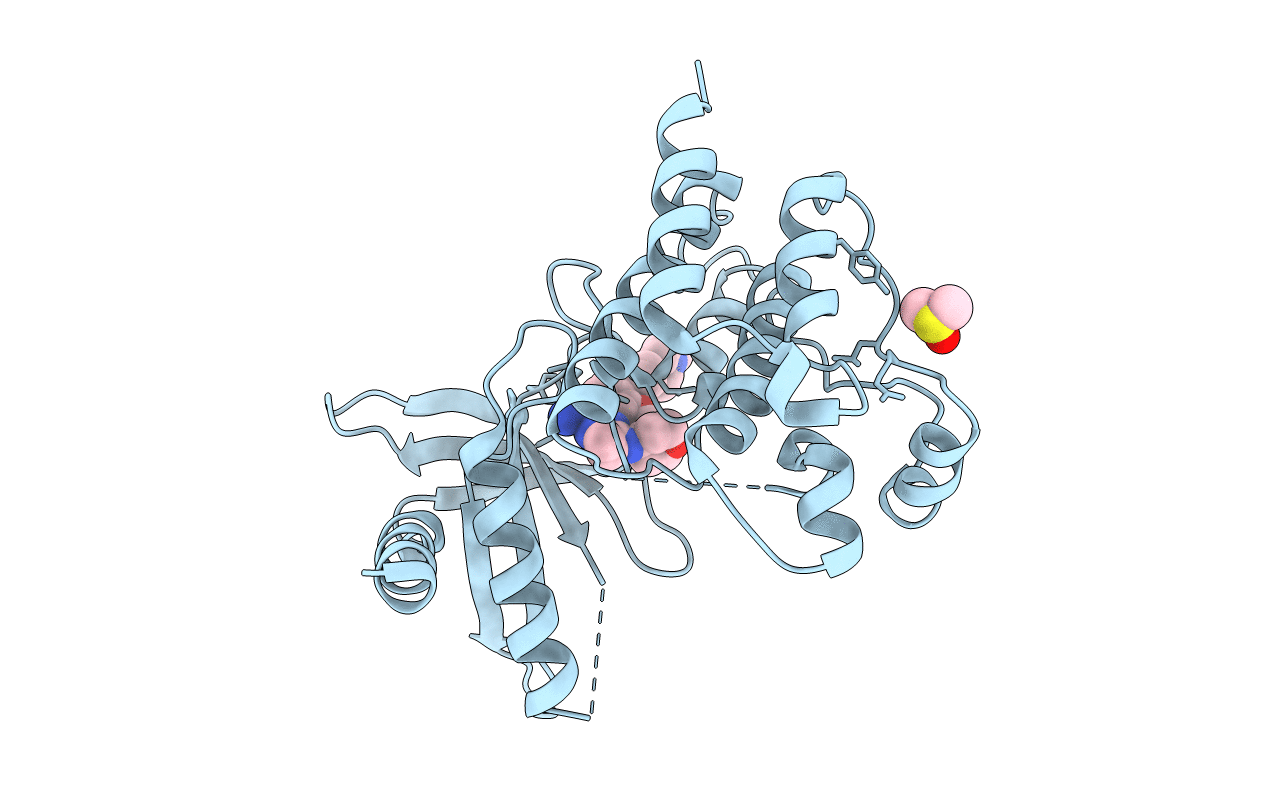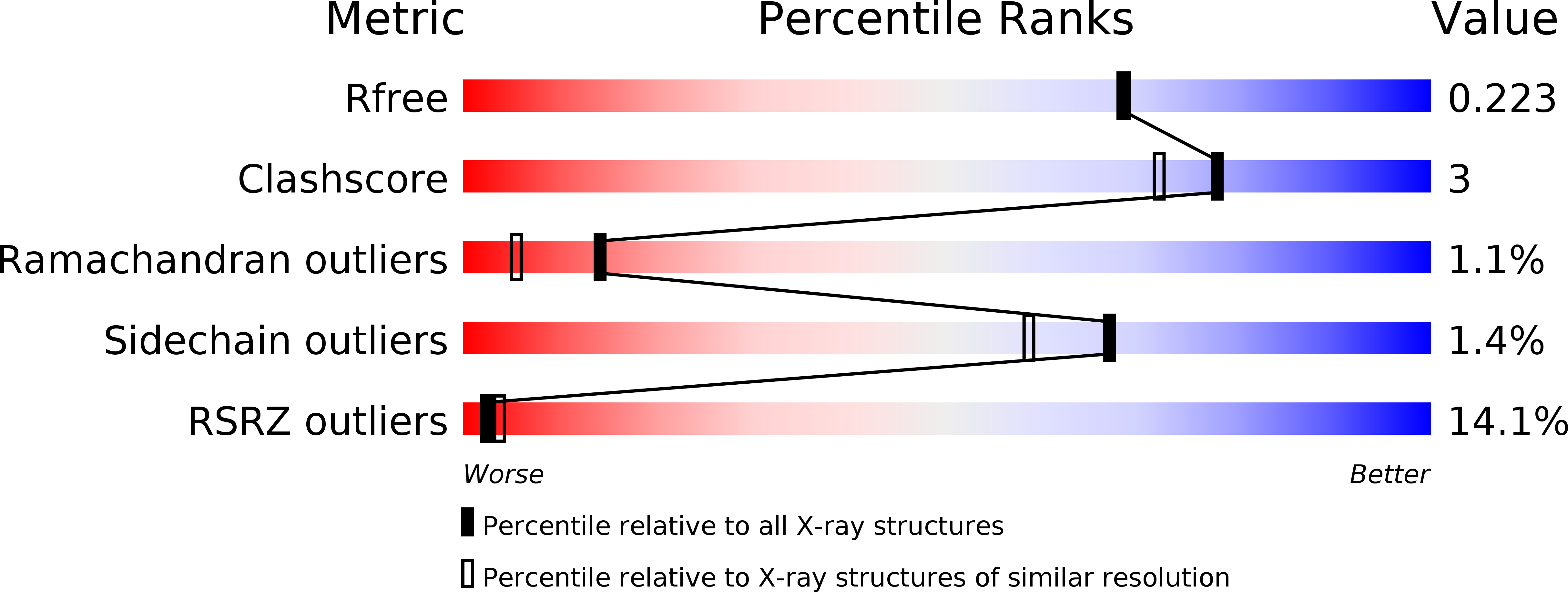
Deposition Date
2020-09-05
Release Date
2020-10-28
Last Version Date
2024-01-31
Entry Detail
PDB ID:
7AB1
Keywords:
Title:
Crystal structure of MerTK kinase domain in complex with Gilteritinib
Biological Source:
Source Organism:
Homo sapiens (Taxon ID: 9606)
Host Organism:
Method Details:
Experimental Method:
Resolution:
1.93 Å
R-Value Free:
0.29
R-Value Work:
0.23
R-Value Observed:
0.23
Space Group:
C 2 2 21


